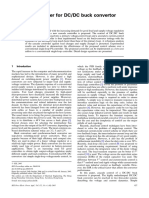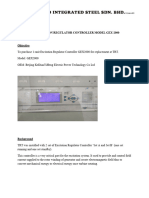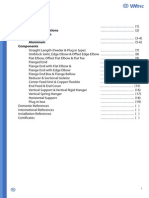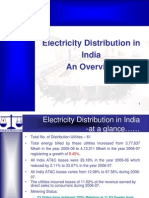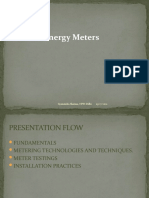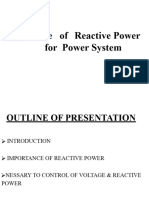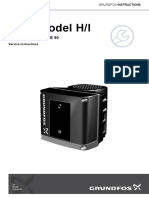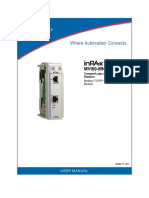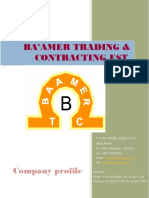A
Presentation on
Reactive Power Pricing
1
� What is Reactive Power?
• In an alternating current circuit both the current and voltage
are sinusoidal and power is expressed as the product of
current and voltage. In a simple resistive circuit the voltage
and current are in phase, the real power is equal to the
apparent power and no reactive power flows.
• However when the voltage and current pass through certain
types of circuits (inductive or capacitive) the voltage and
current become out of phase. This phase separation is usually
called the Power factor and the current is said to lag or lead
the voltage.
• It is defined as the product of the rms voltage, current, and the
sine of the difference in phase angle between the two.
Reactive power is usually denoted Q and expressed in volt-
amperes reactive, or var (not watts). This is to avoid confusion
when specifying the power of a load (var automatically refers
to reactive power). Contd..
2
� Power?
What is Reactive Power? (Contd..)
• Reactive power is associated with the reactance of a load, and
unlike active power, can be positive or negative. A purely
inductive load is associated with a negative reactive power and lags
the active power by 90 degrees.
• A purely capacitive load is associated with a positive reactive power
and leads the active power by 90 degrees.
• To maintain efficient transmission, it is often necessary to reduce the
magnitude of the reactive power in a system. This is known as
power factor correction.
• If there is a phase separation between the Voltage and Current, the
instantaneous power will have to 'work' harder to produce the
equivalent power as if they were in phase.
Contd..
3
� What is Reactive Power?
• Reactive power is described as the amount of power
required to overcome the phase shift between the current
and voltage. It is generally regarded as waste power as it
is used to 'energize' the circuit to allow it do useful work.
• Reactive Power as such cannot do any work and is merely
a facilitator to do some useful work by Active power.
(Analogy)
• Capacitive circuits generate reactive power and inductive
circuits absorb reactive power. If large quantities of
reactive power (positive or negative) are present then the
overall power factor will be low.
4
� Reactive Loads
• Electric motors, Transformers, electromagnetic generators and
alternators used for creating alternating current are all components
of the energy delivery chain which require reactive power.
• Losses incurred in transmission from heat and electromagnetic
emissions are included in total reactive power.
• The reactance (X) of a transmission system is many times the
resistance (R) as a result the voltage drops (inductive and total)
becomes sizeable. End voltages drops down. This is the reason to
say that the reactive power and voltage are closely coupled.
• The power delivered also goes down creating lost opportunity to
sale.
• Dynamic reactive power supplied locally, near the load, has more of
an impact than when supplied from distant generators.
5
� Reactive Power Supply is an
Ancillary Service
• Reactive power supply is one of a class of power system reliability
services collectively known as ancillary services, and is essential for
the reliable operation of the bulk power system.
• Reactive power is energy which must be produced for maintenance
of the system and is not produced for end-use consumption.
• The reactive power absorbed by a transmission line or transformer
is proportional to the square of the current. It compounds the losses
by lowering supply voltages. Reactive power flow wastes energy
and capacity.
• Because of this, it is difficult to supply reactive power over long
distances, it “Does Not Travel Well”.
• Reactive power can be supplied from either static or dynamic VAR
sources (capacitors or generators). To correct lagging power flow,
leading reactive power (current leading the voltage) is supplied to
bring the current in phase with voltage.
6
� Why is the need for local
growing?
reactive power growing?
• There are growing instances of “micro voltage
collapse” in distribution systems. A voltage collapse
occurs when the system is trying to serve more load
than the voltage can support.
• Newer loads are causing higher peaks and worse
power factors. Loads like CFLs (PF of 0.5),
Discharge lamps, fluorescent lamps, 1-phase Arc-
welding sets, Thyristor loads etc.
• Load growth on existing circuits has created
unforeseen voltage problems.
7
� Why do we need a tariff?
• As per the IEGC Code and Grid Connectivity Standards
issued by Central Electricity Authority (CEA), the
DISCOMs shall not depend on the Grid for Reactive
Power.
• Having the distribution substations at a slightly leading
PF would improve capacity on the transmission system.
• Providing local supplies of dynamic reactive power would
reduce losses, increase capacity, and increase the
margin to voltage collapse.
8
� GTCS Condition of PF
• The consumers are supposed to maintain a
minimum PF of 0.95 lag.
• If PF falls below 95%, consumers have to pay
penal charges as per tariff order.
• Consumers can draw reactive power at free of
cost after maintaining 0.95 pf.
9
� Drawback in Present practice -
an example
• Customer A draws 500 kW active power and 242 kVAr
reactive power at 0.90 pf
• Customer B draws 100 kW active power and 62 kVAr reactive
power at 0.85 pf.
• Here Customer ‘A’ is drawing 242 kVAr of Reactive Power
which is more than customer ‘B’s reactive power of 62 kVAr.
• Who is causing more loss to the system?
• Obviously consumer ‘A’ is causing more loss than Consumer
‘B’ to the System.
• As per the TO, Consumer B pays penal charges.
• The technical loss and resulting lower voltage and
corresponding compounding losses caused by ‘A’ are shared
by all consumers.
10
� Drawback in Present practice
and Conclusion
• There is no logic in fixing floor penalty levels - first at
0.90 and now at 0.95pf.
• Consumer drawing more reactive power causes
more loss and inconvenience to the system and has
to pay more.
• The present billing is done for Active Power (VI Cos
Ø - Horizontal vector). But the power drawn by the
consumer is Apparent power (VI - Hypotenuse).
• If billing is done for both active and reactive power,
we can overcome the drawback.
11
� Reactive power Pricing
• The solution is proper Reactive Power Pricing.
• Reactive Power tariff can be levied in two
ways.
• (a) By fixing separate reactive power tariff
along with kWh tariff.
• (b) By fixing kVAh tariff which includes both
active and reactive power.
• As already stated, the power drawn from the
system is Apparent Power (Diagonal Vector)
and not the kW power.
12
� Benefits of Reactive power
pricing
• If the tariff is fixed on the basis of kVAh (Apparent
Power), no consumer will draw reactive power. The
consumer would always generate reactive power locally
by installing Capacitors.
• Either they draw minimum reactive power or no reactive
power. If reactive power is consumed, the Licensee gets
their share of revenue.
• As a result the PF will reach to near unity.
• Hence, the resultant power (apparent power) will come
down.
• I2R losses will come down.
• System Voltages will improve.
• The Transmission capacity will increase.
• Increases the margin to voltage collapse.
13
� Effective kVArh Tariff
Sample Calculation
• Sample calculation considering 100 kW load for one
hour consumption and kVAh/kWh unit cost @ Rs 1.00
per unit is furnished for understanding reactive power
drawal effect.
• The effective kVArh tariff varies from 0 to 82% of
kVAh/kWh tariff for power factor variation of Unity to
0.20
• Contribution of kWh component and kVArh component
to kVAh tariff is shown with the help of Graph
14
� Sample Calculations @ Re. 1.00/kVAh
Effecti
With kWh kVArh
Sl. Power Rs./un ve
kW KWH kVArh kVAh kVAH Contrib Contri
No Factor it kVArh
Tariff ution bution
Tariff
1 100 100.00% 100 0 100.00 1 100.00 100 0.00 0.00
2 100 98.00% 100 20 102.04 1 102.04 100 2.04 0.10
3 100 95.00% 100 33 105.26 1 105.26 100 5.26 0.16
4 100 90.00% 100 48 111.11 1 111.11 100 11.11 0.23
5 100 85.00% 100 62 117.65 1 117.65 100 17.65 0.28
6 100 80.00% 100 75 125.00 1 125.00 100 25.00 0.33
7 100 75.00% 100 88 133.33 1 133.33 100 33.33 0.38
8 100 70.71% 100 100 141.42 1 141.42 100 41.42 0.41
9 100 70.00% 100 102 142.86 1 142.86 100 42.86 0.42
10 100 65.00% 100 117 153.85 1 153.85 100 53.85 0.46
11 100 60.00% 100 133 166.67 1 166.67 100 66.67 0.50
12 100 55.00% 100 152 181.82 1 181.82 100 81.82 0.54
13 100 50.00% 100 173 200.00 1 200.00 100 100.00 0.58
14 100 45.00% 100 198 222.22 1 222.22 100 122.22 0.62
15 100 40.00% 100 229 250.00 1 250.00 100 150.00 0.65
16 100 35.00% 100 268 285.71 1 285.71 100 185.71 0.69
17 100 30.00% 100 318 333.33 1 333.33 100 233.33 0.73
18 100 25.00% 100 387 400.00 1 400.00 100 300.00 0.77
19 100 20.00% 100 490 500.00 1 500.00 100 400.00 0.82
15 Back
� 600
500
400
With kVAH Tariff
Pow er Factor
With kVAH Tariff
300
kWh Contribution
kVArh Contribution
200
100
0
100% 95% 85% 75% 70% 60% 50% 40% 30% 20%
Power Factor
16 Back
� Effective kVArh Tariff
Effective kVArh
Tariff
0.90
0.80
0.70
Effective kVArh Tariff
0.60
0.50
0.40
0.30
0.20
0.10
0.00
100% 95% 85% 75% 70% 60% 50% 40% 30% 20%
Power Factor
17 Slide 14
� Electricity Policy
• If the Discoms do not depend on the grid
for reactive power means, implementation
of ;
a) Energy conservation
b) DSM measures
c) Distributed generation
18
�19
� P
S2 = P 2 + Q 2
Q Q S = Sqrt of (P2 + Q2)
20 <
�21 <
�22
Back 2
�23 Back Slide 3
�24 Slide3 Slide6
�25 Back
� Equipment and appliances cos φ tan φ
Common induction motor loaded at 0% 0.17 5.80
25% 0.55 1.52
50% 0.73 0.94
75% 0.80 0.75
100% 0.85 0.62
Incandescent lamps 1.0 0
Fluorescent lamps (uncompensated) 0.5 1.73
Fluorescent lamps (compensated) 0.93 0.39
Discharge lamps 0.4 to 0.6 2.29 to 1.33
Ovens using resistance elements 1.0 0
Induction heating ovens (compensated) 0.85 0.62
Dielectric type heating ovens 0.85 0.62
Resistance-type soldering machines 0.8 to 0.9 0.75 to 0.48
Fixed 1-phase arc-welding set 0.5 1.73
Arc-welding motor-generating set 0.7 to 0.9 1.02 to 0.48
Arc-welding transformer-rectifier set 0.7 to 0.8 1.02 to 0.75
Arc furnace 0.8 0.75
Back
26














